News
Sustainability Newsletter – March 2024
The importance of renewable energy in making sure electric cars really are the green choice, and one Dutch couple’s mission to prove it!
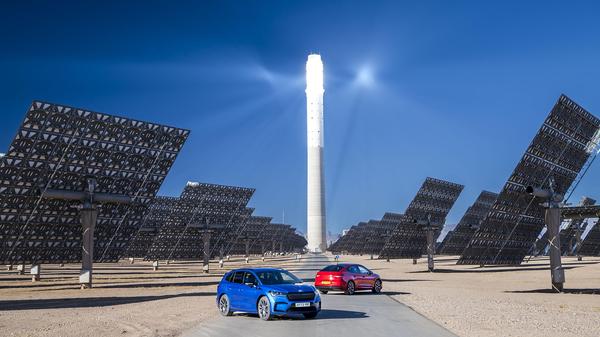

Words by: Dan Trent
Published on 14 March 2024 | 0 min read
While electric cars are a vital part of improving local air quality in cities they’re ultimately only as clean as the electricity used to charge them. Which is fine if that’s somewhere using a decent mix of renewable energy sources, as many European countries do. But less good in places like China, where much of electricity generation is still from fossil fuels. Which is why all the virtue signalling publicity shots you see of electric cars have them parked in front of wind turbines. And not a coal-fired power station.
Developing clean ways to generate the electricity powering battery-powered vehicles is, therefore, at least as important as the cars themselves. Which is why Skoda took us along to an innovative solar power station while we were out in Morocco driving the updated Enyaq and Enyaq Coupe to demonstrate one form of renewable energy that could power our electric cars into the future.
Developing clean ways to generate the electricity powering battery-powered vehicles is, therefore, at least as important as the cars themselves. Which is why Skoda took us along to an innovative solar power station while we were out in Morocco driving the updated Enyaq and Enyaq Coupe to demonstrate one form of renewable energy that could power our electric cars into the future.
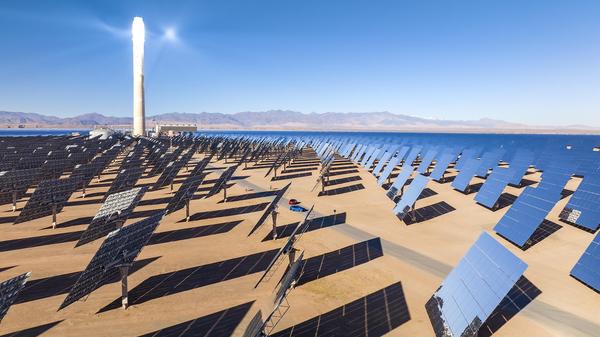
While we’re all used to the idea of solar panels converting the sun’s rays into electricity the vast Noor Power Station instead directs one of Morocco’s great natural resources – which is to say blazing sunshine – into vast arrays of mirrors that then heat oil pumped around the complex. Just as regular power stations may use coal or nuclear, this via the medium of molten salt then heats water to turn generators that then create the electricity. The residual heat in the salt is such that this can continue for as long as three hours after the sun has gone down, the Noor 1 plant able to power over half a million homes and generate 150 megawatts of energy a day.
The technology is developing fast, though, and the adjacent Noor 2 plant uses a more efficient process good for 200 megawatts and over seven hours of ‘stored’ residual heat for after hours use. But the most visually impressive installation is Noor 3, which has a circular array of 7,400 giant mirrors around a central 242-metre tower which, until recently, was the second tallest structure on the continent. By tracking the movement of the sun these tennis court sized mirrors focus the sun’s rays on a ‘receiver’ at the top of the tower where the molten salt is heated from 280 degrees Celsius to nearly 600 degrees, this energy then released to power the steam generators. The scale and ambition of what has been achieved here is dizzying, and the plant operators are justifiably proud of the futuristic looking installation they have created. It goes without saying this kind of renewable energy generation won’t work everywhere, and back in grey and overcast Britain a solar plant of this type likely wouldn’t be as effective. Where Morocco has sun we instead have wind, wave and tidal resources that could, with the same sense of ambition, contribute more to our energy mix. And probably should.
The technology is developing fast, though, and the adjacent Noor 2 plant uses a more efficient process good for 200 megawatts and over seven hours of ‘stored’ residual heat for after hours use. But the most visually impressive installation is Noor 3, which has a circular array of 7,400 giant mirrors around a central 242-metre tower which, until recently, was the second tallest structure on the continent. By tracking the movement of the sun these tennis court sized mirrors focus the sun’s rays on a ‘receiver’ at the top of the tower where the molten salt is heated from 280 degrees Celsius to nearly 600 degrees, this energy then released to power the steam generators. The scale and ambition of what has been achieved here is dizzying, and the plant operators are justifiably proud of the futuristic looking installation they have created. It goes without saying this kind of renewable energy generation won’t work everywhere, and back in grey and overcast Britain a solar plant of this type likely wouldn’t be as effective. Where Morocco has sun we instead have wind, wave and tidal resources that could, with the same sense of ambition, contribute more to our energy mix. And probably should.
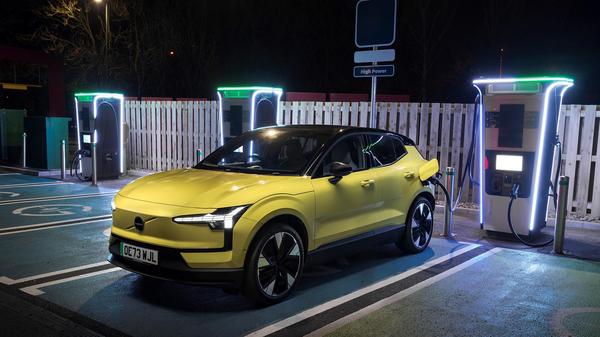
A reminder of why this matters meanwhile comes from Volvo, which previously published a controversial report comparing how long it would take an electric XC40 Recharge to ‘break even’ on the additional embedded carbon from its manufacture compared with an otherwise identical combustion-engined version built on the same production line. See more on this in Rory’s explainer video on the topic.
The short of it was that the extra 60 per cent carbon used in the production of the batteries and other components means an electric car has travel some distance before it can truly be said to be part of the solution and not the problem. That breakeven point compared with a combustion engine car comes a lot sooner when charged on renewable energy rather than plugged into a grid where fossil fuels are still the main source of electricity, so the more power stations like Noor (or others using renewable energy) the better. Returning to this theme Volvo has done another Life Cycle Analysis (LCA) on its EX30 and says it has the lowest carbon footprint of any electric model it’s built to date. Extensive use of recycled materials in its construction help here, with around a quarter of the aluminium, a fifth of the steel and a comparable amount of the plastics used to build it from recycled materials. If charged on a typical European mix of renewably and conventionally generated electricity Volvo has calculated a single-motor EX30 has a lifetime carbon footprint of 23 tonnes, 14.8 tonnes of which is from building it. For context that lifetime carbon footprint is, says Volvo, 60 per cent less than a petrol powered XC40 over a comparable usage cycle. For its part Volvo is working with suppliers to reduce the carbon for the production phase – to do the same over its projected life on the road is down to how that domestic energy is generated.
The short of it was that the extra 60 per cent carbon used in the production of the batteries and other components means an electric car has travel some distance before it can truly be said to be part of the solution and not the problem. That breakeven point compared with a combustion engine car comes a lot sooner when charged on renewable energy rather than plugged into a grid where fossil fuels are still the main source of electricity, so the more power stations like Noor (or others using renewable energy) the better. Returning to this theme Volvo has done another Life Cycle Analysis (LCA) on its EX30 and says it has the lowest carbon footprint of any electric model it’s built to date. Extensive use of recycled materials in its construction help here, with around a quarter of the aluminium, a fifth of the steel and a comparable amount of the plastics used to build it from recycled materials. If charged on a typical European mix of renewably and conventionally generated electricity Volvo has calculated a single-motor EX30 has a lifetime carbon footprint of 23 tonnes, 14.8 tonnes of which is from building it. For context that lifetime carbon footprint is, says Volvo, 60 per cent less than a petrol powered XC40 over a comparable usage cycle. For its part Volvo is working with suppliers to reduce the carbon for the production phase – to do the same over its projected life on the road is down to how that domestic energy is generated.
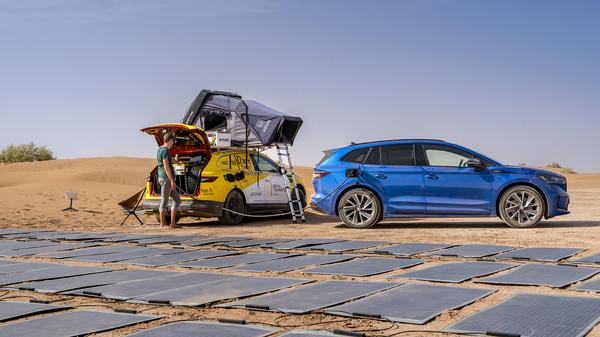
Which brings us back to solar, and the other story from our trip to Morocco, that of the Dutch couple who completed a sustainable road trip from their home in the Netherlands to the southern tip of Africa and back, much of it charging the car via a portable array of solar panels. You can read more about their trip here, their stated goal being to prove that you can drive an electric car across a continent where charging opportunities might otherwise be thousands of miles apart. It took a while but they did it, the reliability and toughness of their Skoda also dispelling some of the myths about electric car maintenance and long-term battery degradation along the way.
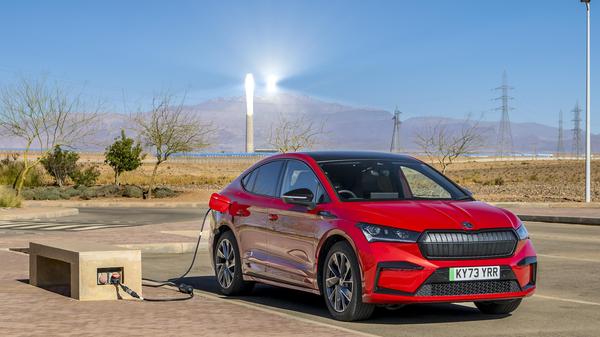
Previous Sustainability Newsletters:
• Sustainability newsletter – January 2024 | French act on heavy SUVs and embedded CO2 of imported electric cars, BYD plans European factory and Nio opens battery swapping centres
• Sustainability newsletter – December 2023 | Vauxhall electrifies Britain’s streets, a second life for electric car batteries and recycled Alcantara seat fabric combines luxury and sustainability • Sustainability newsletter – November 2023 | Costs for EV batteries fall, funding for UK-sourced lithium project, GM goes renewable and Lynk & Co commits to life cycle CO2 audits • Sustainability newsletter – October 2023 | Costs for EV batteries fall, funding for UK-sourced lithium project, GM goes renewable and Lynk & Co commits to life cycle CO2 audits • Sustainability newsletter – September 2023 | Erin Baker shares her thoughts on the UK's changing net zero targets and delaying the 2030 ban for new petrol and diesel cars. • Sustainability newsletter – August 2023 | Zapmap reports increased charger installations, Lime's e-mobility revolution and Nissan's autonomous driving • Sustainability newsletter – July 2023 | Public charging network expands, hydrogen back on the agenda and choosing green tyres • Sustainability newsletter – June 2023 | BMW helps electrify the UK’s national parks and Kia ditches leather across its range of cars • Sustainability newsletter – May 2023 | What upholstery will you be choosing for your next car - leather or pleather? • Sustainability newsletter – April 2023 | Polestar’s ‘moonshot’ for a zero emissions car and a look into synthetic fuels as a possible lifeline for internal combustion classics • Sustainability newsletter – February 2023 | Our regular sustainability round-up continues with a look at some new recycled materials this month, all of which could be in your car soon • Sustainability newsletter – January 2023 | Eco awareness is driving more and more car buying decisions for a variety of reasons -here we celebrate those doing it right!
• Sustainability newsletter – December 2023 | Vauxhall electrifies Britain’s streets, a second life for electric car batteries and recycled Alcantara seat fabric combines luxury and sustainability • Sustainability newsletter – November 2023 | Costs for EV batteries fall, funding for UK-sourced lithium project, GM goes renewable and Lynk & Co commits to life cycle CO2 audits • Sustainability newsletter – October 2023 | Costs for EV batteries fall, funding for UK-sourced lithium project, GM goes renewable and Lynk & Co commits to life cycle CO2 audits • Sustainability newsletter – September 2023 | Erin Baker shares her thoughts on the UK's changing net zero targets and delaying the 2030 ban for new petrol and diesel cars. • Sustainability newsletter – August 2023 | Zapmap reports increased charger installations, Lime's e-mobility revolution and Nissan's autonomous driving • Sustainability newsletter – July 2023 | Public charging network expands, hydrogen back on the agenda and choosing green tyres • Sustainability newsletter – June 2023 | BMW helps electrify the UK’s national parks and Kia ditches leather across its range of cars • Sustainability newsletter – May 2023 | What upholstery will you be choosing for your next car - leather or pleather? • Sustainability newsletter – April 2023 | Polestar’s ‘moonshot’ for a zero emissions car and a look into synthetic fuels as a possible lifeline for internal combustion classics • Sustainability newsletter – February 2023 | Our regular sustainability round-up continues with a look at some new recycled materials this month, all of which could be in your car soon • Sustainability newsletter – January 2023 | Eco awareness is driving more and more car buying decisions for a variety of reasons -here we celebrate those doing it right!